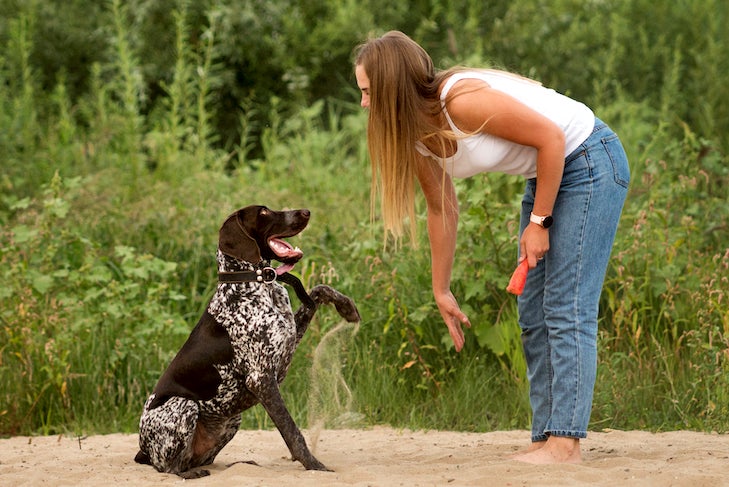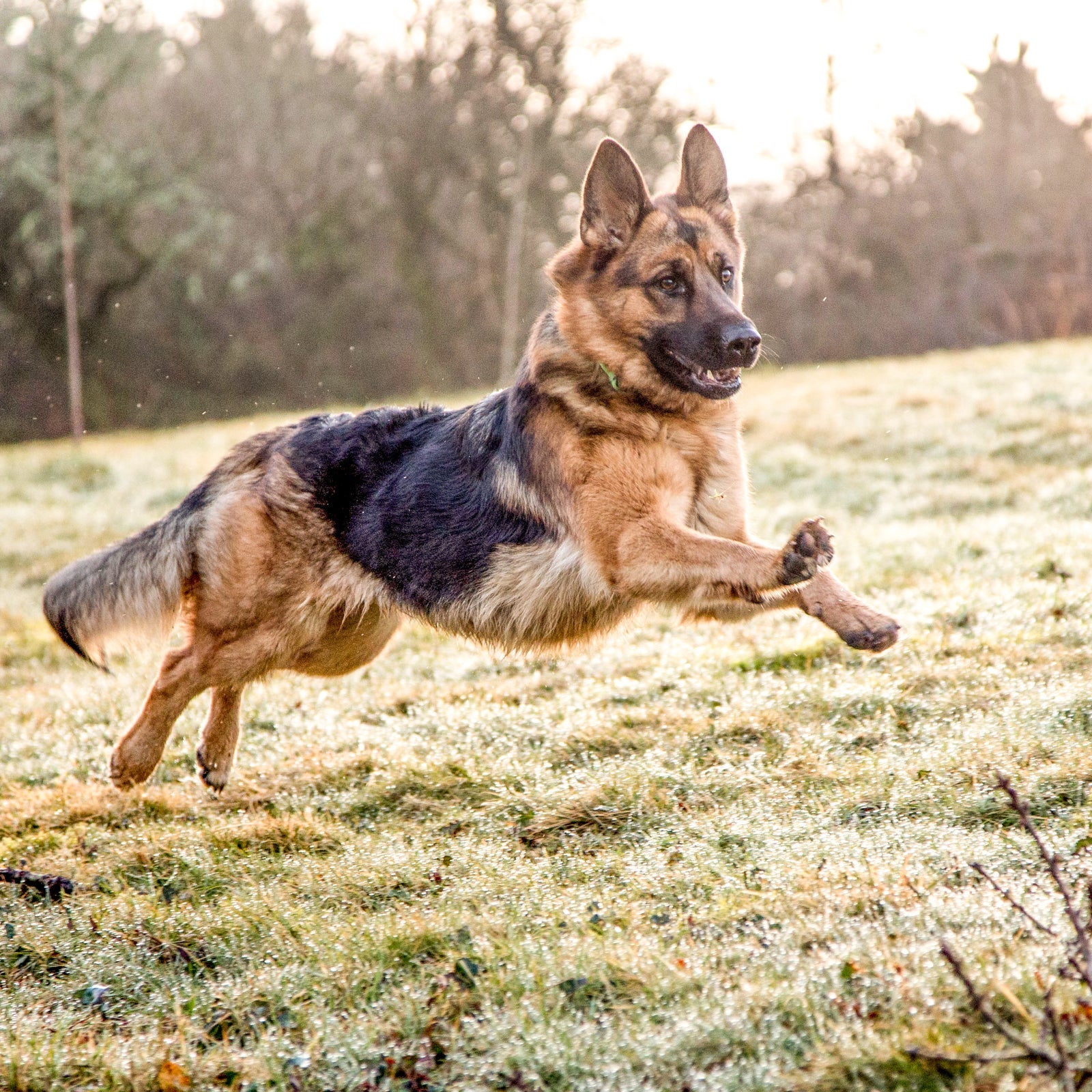Positive Reinforcement in Dog Training: A Humane Approach to Success
Positive Reinforcement in Dog Training: A Humane Approach to Success
Blog Article
Transform Your Dog's Actions With Proven Training Approaches
Changing your canine's actions needs a nuanced understanding of their specific traits and demands, as well as the application of proven training approaches. By utilizing positive reinforcement and recognizing crucial signs in their body movement, you can efficiently address common behavior concerns such as too much jumping or barking. Consistency in your training method not only enhances obedience however additionally cultivates a much deeper bond of depend on and regard in between you and your pet dog. However, the path to successful makeover might present unforeseen difficulties that warrant more expedition.
Recognizing Pet Actions
Understanding dog habits is important for efficient training and communication between people and their canine companions. Canines, as social animals, show a series of actions affected by genes, setting, and experiences - Dog training. Acknowledging these actions assists proprietors tailor their training approaches to fulfill the specific requirements of their dogs
Secret facets of canine actions include body language, articulations, and social interactions. A wagging tail frequently shows exhilaration, while a lowered head may indicate submission or concern. Recognizing these signals can aid owners interpret their pet's emotional state and respond properly. In addition, socializing plays a vital function in forming habits; pets that communicate favorably with various other pets and various people are normally extra well-adjusted and versatile.
Additionally, identifying stress and anxiety signals-- such as panting, pacing, or evasion habits-- can stop acceleration into extra significant concerns. Proprietors that are attuned to their dog's behavior can create a secure and nurturing setting, fostering count on and enhancing the training procedure. Inevitably, a deep understanding of canine habits lays the foundation for an unified connection and reliable training results, making certain both pet dogs and their owners prosper with each other.
Favorable Support Methods
Positive reinforcement methods are commonly acknowledged as one of one of the most efficient methods for training pets, cultivating a positive learning atmosphere. This approach includes fulfilling desired habits with treats, praise, or play, thus urging the pet to repeat those actions. Unlike punitive methods, favorable reinforcement develops depend on and enhances the bond in between the instructor and the dog.
To execute positive reinforcement effectively, timing is crucial. Benefits need to be provided instantly complying with the wanted actions to aid the pet make the connection. Uniformity is also vital; making use of the exact same commands and benefits aids the pet dog recognize what is anticipated. In addition, varying the benefits can keep the dog engaged - Dog training. Alternating between treats, toys, and verbal praise can maintain interest and inspiration.
It is very important to note that favorable reinforcement is not regarding bribery; instead, it has to do with reinforcing etiquette. In time, as the pet discovers to connect certain activities with favorable results, the frequency of incentives can be progressively reduced, transitioning to verbal praise or periodic incentives. This method not just urges obedience yet also advertises a confident and happy pet, making training an extra pleasurable experience for both celebrations entailed.
Dealing With Typical Problems
Addressing usual issues during pet dog training is necessary for guaranteeing a successful and harmonious partnership between the pet and its owner. Many dog owners run into behavior difficulties, such as excessive barking, leaping, and leash drawing. Understanding the source of these habits is essential for reliable training.
Too much barking might originate from boredom, stress and anxiety, or a lack of socializing. To reduce this, supply sufficient physical workout, mental stimulation, and possibilities for social communication with both human beings and various other pet dogs. Leaping can commonly signify excitement or a need for attention. Training the dog to sit upon welcoming can reroute this actions favorably.
Chain drawing is an additional common issue, frequently arising from a pet's passion to check out. Making use of proper chain dealing with methods, combined with training protocols that urge loose-leash strolling, can considerably improve this habits.
Furthermore, issues like resource safeguarding or separation stress and anxiety need customized strategies. Steady desensitization and counter-conditioning can be effective in attending to these obstacles. By identifying and proactively managing these typical issues, canine owners can promote an extra delightful training experience and strengthen the bond with their canine friends.
Uniformity in Training

To attain consistency, it is crucial that all participants of the home comply with the same training approaches. As an example, using the same verbal cues and hand signals makes sure that the pet dog gets consistent messages. Additionally, the timing of incentives and improvements should correspond; immediate support raises the likelihood that the pet will link the actions with the end result.
Normal technique sessions, paired with organized schedules for feeding, walking, and play, aid pets prepare for and recognize their atmosphere, making them more receptive to training. Eventually, consistency promotes a feeling of safety and security and count on, empowering dogs to find out much more properly.
Structure a Strong Bond
Just how can fostering a strong bond in between a dog and its proprietor boost the training experience? A solid relationship constructed on count on and regard functions as the foundation for efficient training. When a pet dog feels safe and secure in its link with its owner, it is extra like it most likely to display favorable actions and be receptive to learning. This bond motivates the pet to involve fully in training sessions, as it watches the owner as a resource of assistance and assistance.
Additionally, a solid bond assists in far better interaction. Pet dogs are experienced at reading human signs, and a trusting connection enables more clear signals during training. Owners that invest time in structure this bond through play, socializing, and favorable support develop an environment where pets feel eager and motivated to discover.
Furthermore, a well-established link can minimize stress and anxiety and behavior issues, as pets are much less most likely to act out when they feel comprehended and taken care of. Therefore, focusing on the advancement of a strong bond not just boosts the training experience however also adds to a better and more well-adjusted dog. Ultimately, the journey of training transforms into a collaborative partnership, leading to lasting behavioral improvements.
Conclusion

Owners who are attuned to their pet's actions can create a More hints secure and caring atmosphere, promoting count on and boosting the training procedure. Eventually, a deep understanding of canine actions lays the foundation for an unified partnership and effective training end results, guaranteeing both pet dogs and their proprietors prosper together.
Resolving usual issues during dog training is important for making sure a effective and harmonious connection between the dog and its owner.Uniformity is a foundation of reliable pet additional info training, as it develops a clear structure for the canine to understand habits and expectations.In conclusion, transforming a dog's habits with verified training techniques calls for an understanding of canine habits, the application of favorable reinforcement methods, and an emphasis on uniformity.
Report this page